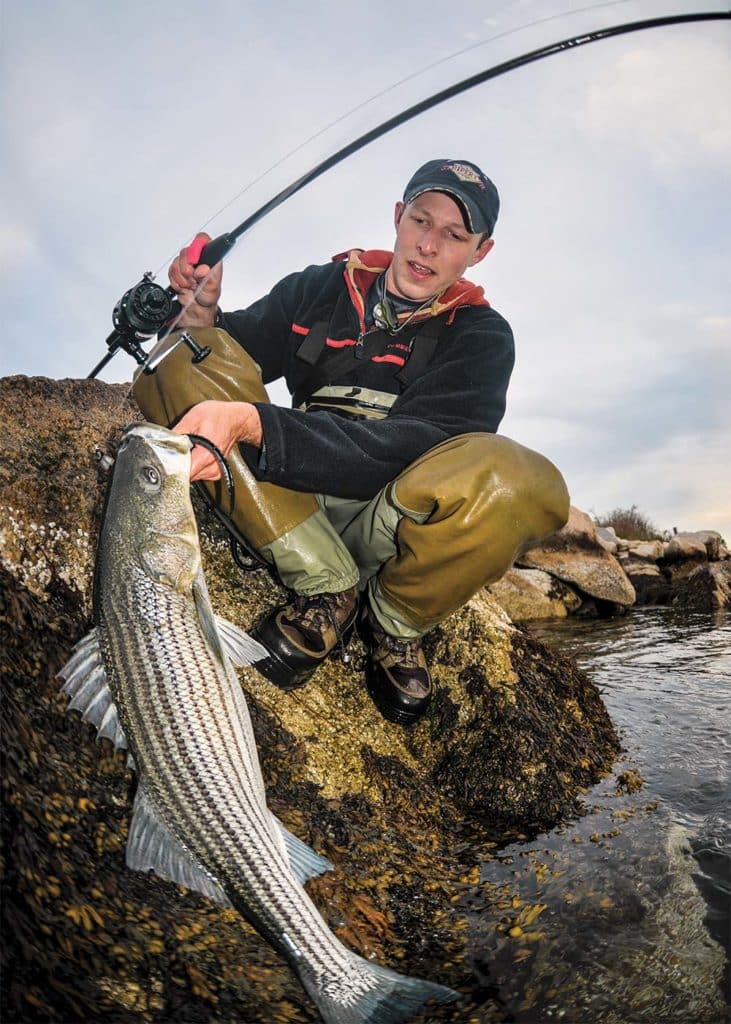
From Canada’s Maritime Provinces to the beaches of North Carolina and even Northern California, stripers thrive as ocean predators, tidal river marauders and estuarine raiders. Striped bass season is year-round, and these are all places where anglers intercept them throughout the year. Pursued by surf-casters and boat fishermen alike, they’ll hit live or dead baits, plugs, jigs, and bucktails cast and trolled.
Striped bass are anadromous, living most of their lives in salt water but returning annually to freshwater rivers to spawn throughout their up-to-30-year life span. Juveniles spend their formative years in widely distributed estuaries. As they near maturity, stripers add a second, more extensive migration to their annual travels: They head for the open ocean, moving north in the summer to feed in the waters from Montauk to southern Canada.
As fall arrives, they reverse course, with the larger fish wintering offshore off Virginia and North Carolina, the smaller fish in estuaries. Each spring the spawning migration begins anew. Still wondering where to catch striped bass? The answer is just about anywhere.
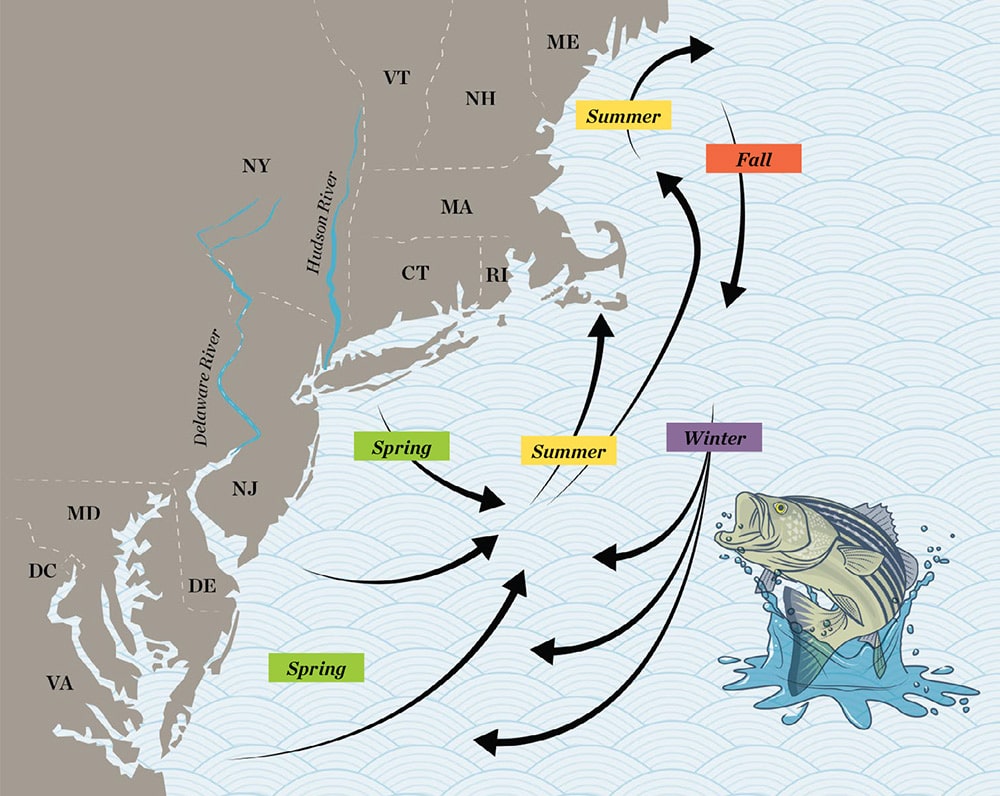
Originally native to the East Coast, 132 small stripers from New Jersey took a transcontinental train ride to California’s Sacramento River in 1879. An additional 300 joined them in 1882. Together they became the brood stock for a thriving West Coast striped bass fishery that extends throughout Northern California’s tidal river systems and into the ocean as far north as Coos Bay, Oregon.
It is estimated that upward of 70 percent of Atlantic striped bass spawn in tidal rivers that flow into Chesapeake Bay. The Hudson River is the second-largest contributor, with significant spawning taking place in the Delaware River and several rivers in North Carolina.
Small, isolated spawning populations can be found as far north as the St. John River in New Brunswick and the Shubenacadie in Nova Scotia.
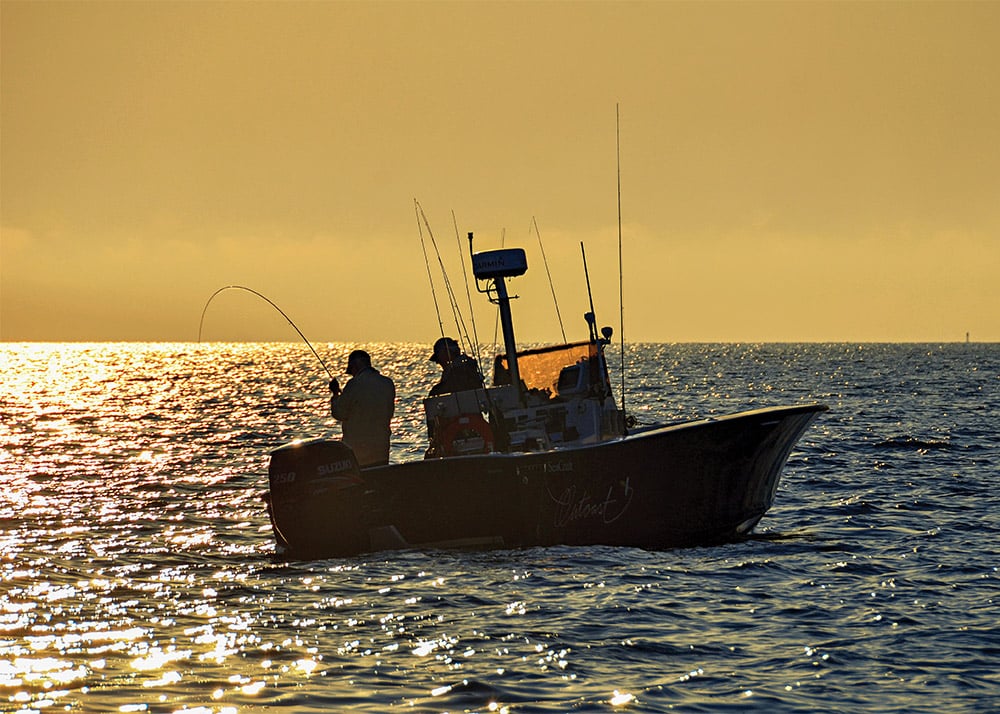
Pre-Spawn Warmup
March finds larger stripers pouring into traditional spawning areas. Fishing starts slow, but as estuaries warm, so does the action.
When water temperatures rise into the 50s, the striped bass season breaks wide open. From Chesapeake Bay to the Delaware and into the lower Hudson and surrounding bays, stripers fall to trolled plugs and bunker spoons, as well as clams and sea worms.
The arrival of schools of herring and menhaden closely followed by even larger bass that wintered offshore means live-lining large baitfish for bass that range well into the 40-pound class and above. Swimbaits such as Storm and Tsunami shads produce, and even topwater plugs see some action. Keep in mind that almost all bass over 25 pounds are females carrying roe, and in some areas they are protected. These include the Susquehanna Flats area of the Chesapeake and the Delaware River north of the Commodore Barry Bridge, where it’s catch-and-release, with circle hooks required for baitfishing.
Check local regulations because they vary from area to area.
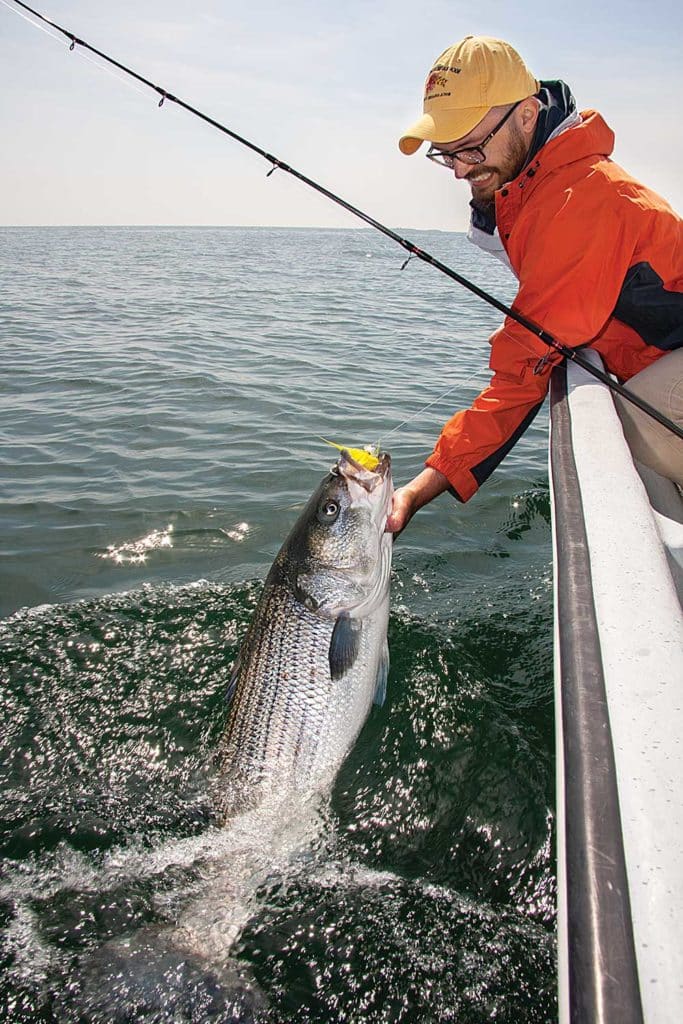
Striped Bass Fishing in the Spring
As waters warm and spring fishing begins, mature stripers start their spawning run up freshwater rivers, disappearing from the estuaries. In the Chesapeake, this typically occurs in April; in the Delaware and Hudson, spawning occurs in May.
Not all fish spawn at once, but rather over the course of weeks. When done, they head back through the estuaries and into the ocean to feed.
The bulk of the Chesapeake spawners leave the bay through its mouth, with smaller contingents exiting through the C&D Canal directly into Delaware Bay, where anglers staked out along transit areas intercept big stripers heading toward the ocean. Those bodies of migrating fish head north, some along the beaches, others offshore in the protected area 3 miles out where fishing for stripers is prohibited by federal regulation.
Many believe that for all the fish we see inside state waters, there are many more outside the boundary line playing it safe.
About a month later, Hudson and Delaware Bay spawners head for open water to join the migration north, providing mid-Atlantic anglers with some of the best bass fishing of the year.
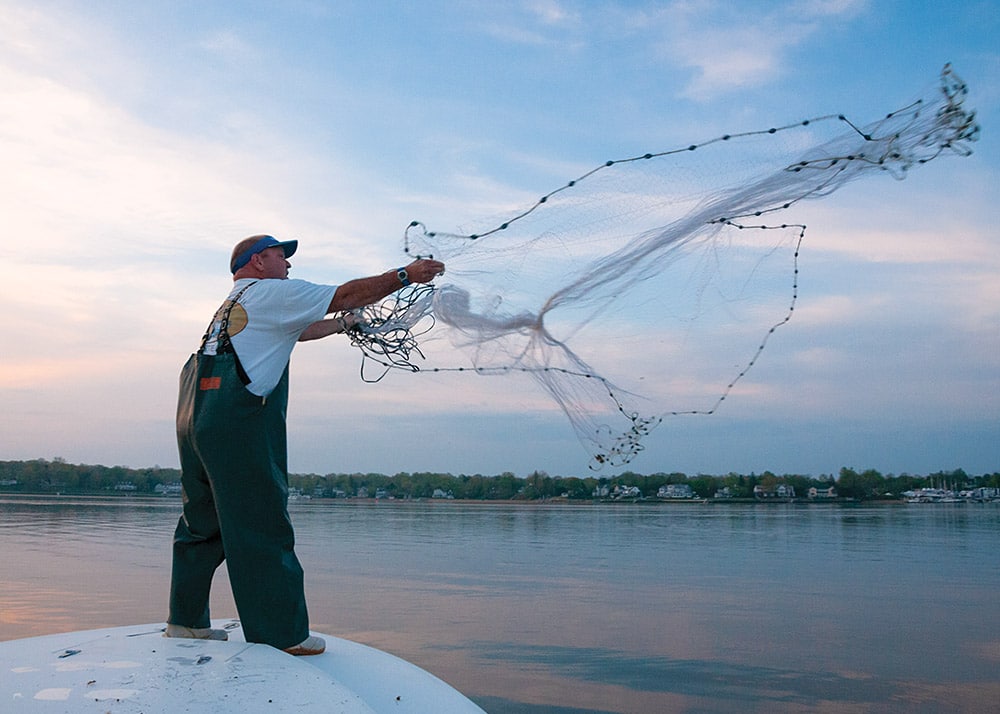
Striped Bass Fishing in the Summer
By June the migration passes Montauk and heads farther north into Long Island Sound, Narragansett Bay, Vineyard Sound and points north, and New England fishermen are champing at the bit.
Tens of thousands of striped bass spread out and feed through the summer, providing fish-filled days and sleepless nights for beach and boat anglers alike.
They’ll take up residence on the outer islands of Nantucket and Martha’s Vineyard, and also patrol the rock-lined coast of Rhode Island and the beaches of Cape Cod. Some won’t stop until they reach the Canadian border or beyond.
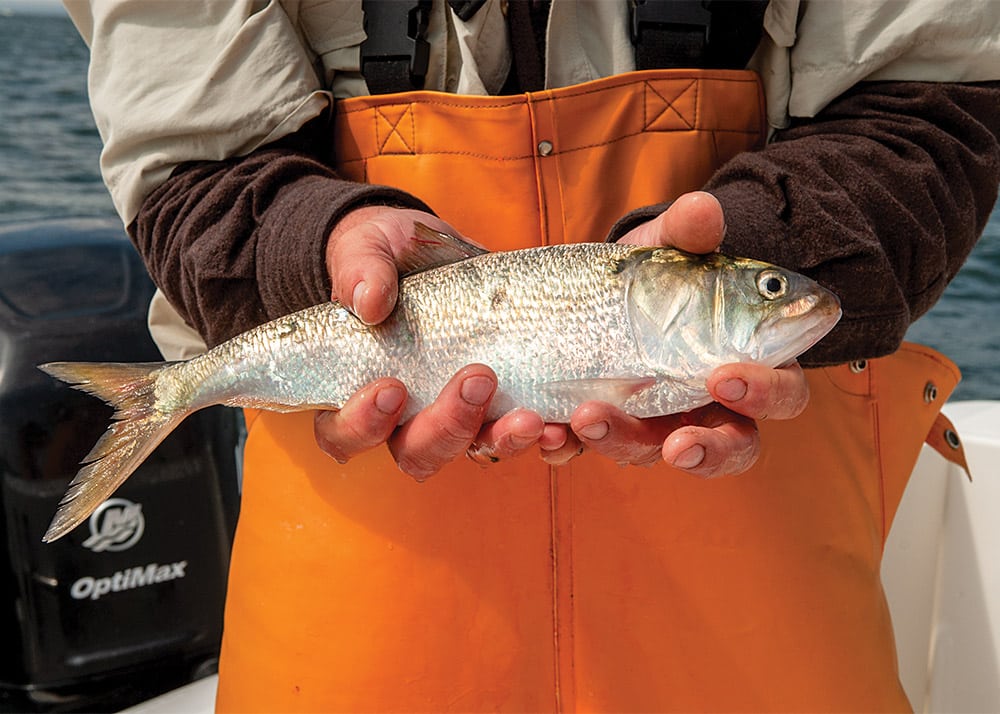
Techniques change, lures and baits will be localized, but the theme remains the same: Striped bass are the top prize for any inshore angler worth his salt. And when the first hints of fall arrive with chilly nights and cooling waters, stripers gather and head south again, giving the anglers they passed in the spring a second shot at them as they make the trek southward.
Striped bass season is one continuous fishing marathon running 12 months of the year. Anglers pursue them, fishing their wintering grounds to their spawning rivers to their summer haunts and back again. A dedicated few follow them throughout the year, but most await their turn when the linesiders come to town.
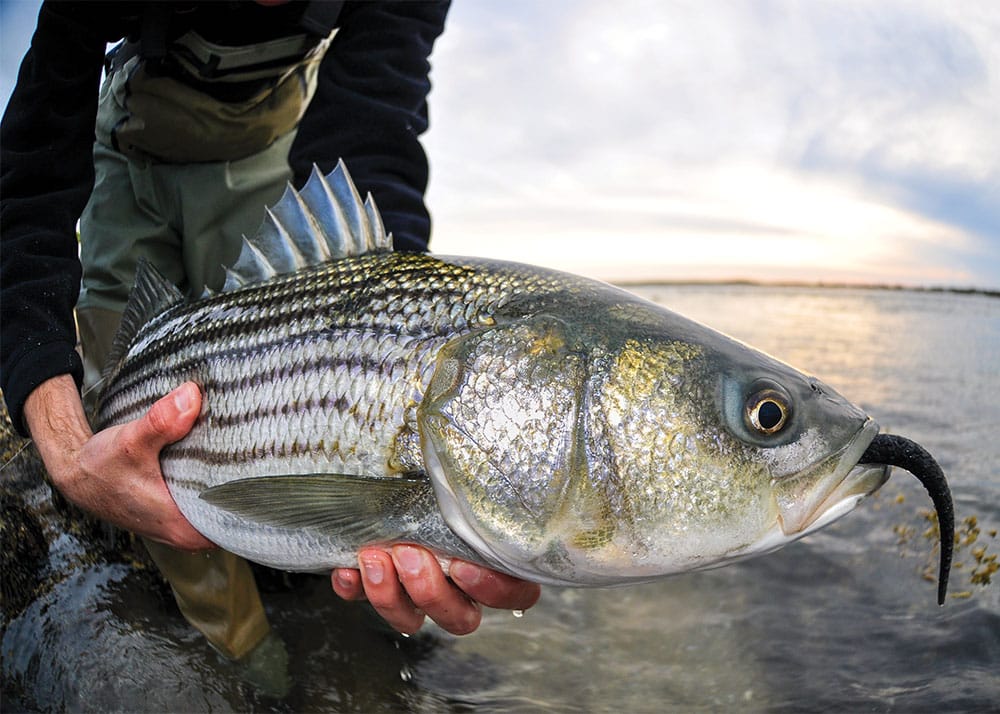
Bear Market
Striper stocks have been through up and down cycles. In the early 1980s, stock assessments estimated that the spawning stock biomass was less than 5 million pounds, and spawning success was at low levels. With angler angst running high, the government passed the Striped Bass Conservation Act in 1984, and strict management regimes were put in place, resulting in steady improvement that peaked in 2004 with the SSB well over 170 million pounds. Today there are new worries that stocks are on a downward trajectory. The SSB has been on a slow decline since 2005 to an estimated 127 million pounds in 2017. Recruitment had its typical ups and downs, with robust years in 2012 and 2014. Spawning success in the Chesapeake has been at or above the 50-year mean three of the last four years, with 2015 the fourth-highest ever recorded.
A single striper produces massive amounts of eggs, but spawning success depends on environmental conditions. They are long-lived and slow to mature, so successful spawns lag behind recruitment. Being vigilant and reacting while stocks are still at robust levels is smart management. The Atlantic States Marine Fisheries Commission will be meeting early in 2019 to discuss the fishery and possibly change regs in response to the declining SSB. There is growing consensus that regulations to reduce the harvest of large bass, the most prolific spawners, should be put in place.









